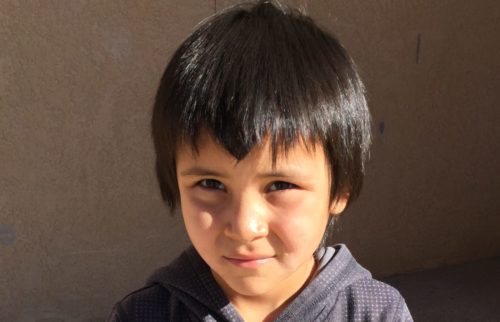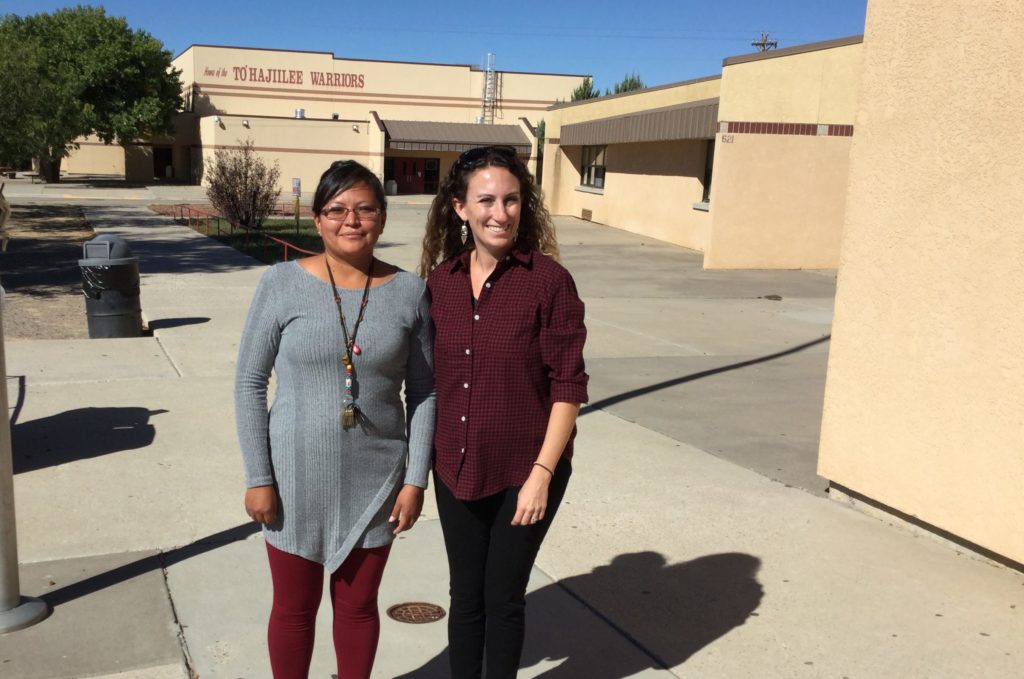The To’Hajiilee (pronounced “toe-HA-ji-lee”) Community School is located in northern New Mexico in the area around Cañoncito. This school is typical of those that serve Navajo children in the United States and are funded by the Bureau of Indian Affairs – except for one thing: it is far removed from the vast Navajo Nation, which spills from Arizona into New Mexico and Utah. Though not a part of the Nation, this area is still considered “Navajo Country,” where a few sheep graze against a landscape of barren desert relieved by occasional flat-topped mesas.
Despite the wealth of natural beauty and rich cultural heritage there, the Navajos who live in and around Cañoncito are desperately poor. There is virtually no employment. Broken homes, alcoholism, and an inadequate amount of food are manifestations of the poverty in which they live. For this reason, the To’Hajiilee Community School serves as a beacon of hope for children. At the school, each child receives nutritious meals, encouragement, and a quality education – giving the students there the opportunity to rise above the difficult economic circumstances from which they come.
The reality of poverty in New Mexico
Katrina does not know what she would do without the Children Incorporated program, which provides warm clothing during winter months, shoes, school supplies, medical supplies, and food items for kids.
According to Poverty USA, an organization that tracks and reports on data from the U.S. Census Bureau, New Mexico ranks 49th in poverty out of fifty states. The child poverty rate there is 30.1 percent. The U.S. Census reports that the critical poverty rates in New Mexico are concentrated among the American Indian population there. More than half of all adults in the Navajo Nation – 56 percent – are unemployed. While education is often seen as the key to reducing poverty, only 25 percent of Navajo adults have at least the equivalent of a high school education.
The Kids Count Data Center for the Annie E. Casey Foundation, another organization that tracks poverty levels, reports that intervening during childhood is key in breaking the cycle of poverty. The center’s data indicates that collaborative efforts are more likely to bear fruit – and New Mexico has begun an initiative to tackle childhood hunger.
The National School Lunch Program, which ensures that children eat a nutritional meal during the school day, is a big help; but still many children go home to inadequate food supplies on nights, weekends, and holidays. Experts say that another way to combat poverty is to improve educational opportunities for children. Children who pertain to minority groups are often hit the hardest by poverty, and New Mexico’s American Indian population is heavily impacted by it.
Drawing Water from a Well
The To’Hajiilee Community School serves pre-kindergarten students up to adult education. Built in the 1960s, it consists of several buildings and a gym. The school has an enrollment of over 300 students. It is approximately one hour west of Albuquerque. “To’Hajiilee” translates to “Drawing Water from a Well” in English. The well to which the name refers is located in a canyon just west of the school.

The To’Hajiilee Community School serves pre-kindergarten students up to adult education.
U.S. Projects Specialist, Shelley Oxenham, recently met with our Volunteer Coordinator Katrina at the To’Hajiilee Community School. Katrina is the Director of Family Engagement at the school, and this past year was her first full year of managing the Children Incorporated program. She is supported by the staff of the school and Elayne, her supervisor.
At the beginning of the school year, Katrina sent a survey to students’ parents that requested shoe and clothing sizes for their kids, as well as a list of needs with checkboxes to select next to them. Katrina used the completed surveys to shop for the students based on the answers, and she had their parents pick her purchases up. She tries to be discreet; she doesn’t want the kids to be labeled as the poorest in the school, causing them to feel embarrassed or ostracized. She said that most every family at the school needs the program, but she tries to enroll the children whose families she knows to be the neediest.
Katrina does not know what she would do without the Children Incorporated program, which provides warm clothing during winter months, shoes, school supplies, medical supplies, and food items for kids. She says that the sponsored children benefit very much, and that she loves it when sponsors are even more involved, and write letters and send packages to their sponsored kids.
As we continue our partnership with Katrina and the To’Hajiilee Community School, according to Shelley, we see our programs supporting the children’s health and education beyond our sponsorship program. After visiting the school, Shelley considered the opportunity for our Hope In Action Fund to contribute to school gardens and markets, which will tackle some food scarcity issues for both sponsored and unsponsored kids.
***
HOW DO I SPONSOR A CHILD IN NEW MEXICO?
You can sponsor a child in New Mexico in one of two ways: call our office at 1-800-538-5381 and speak with one of our staff members, or email us at sponsorship@children-inc.org.

